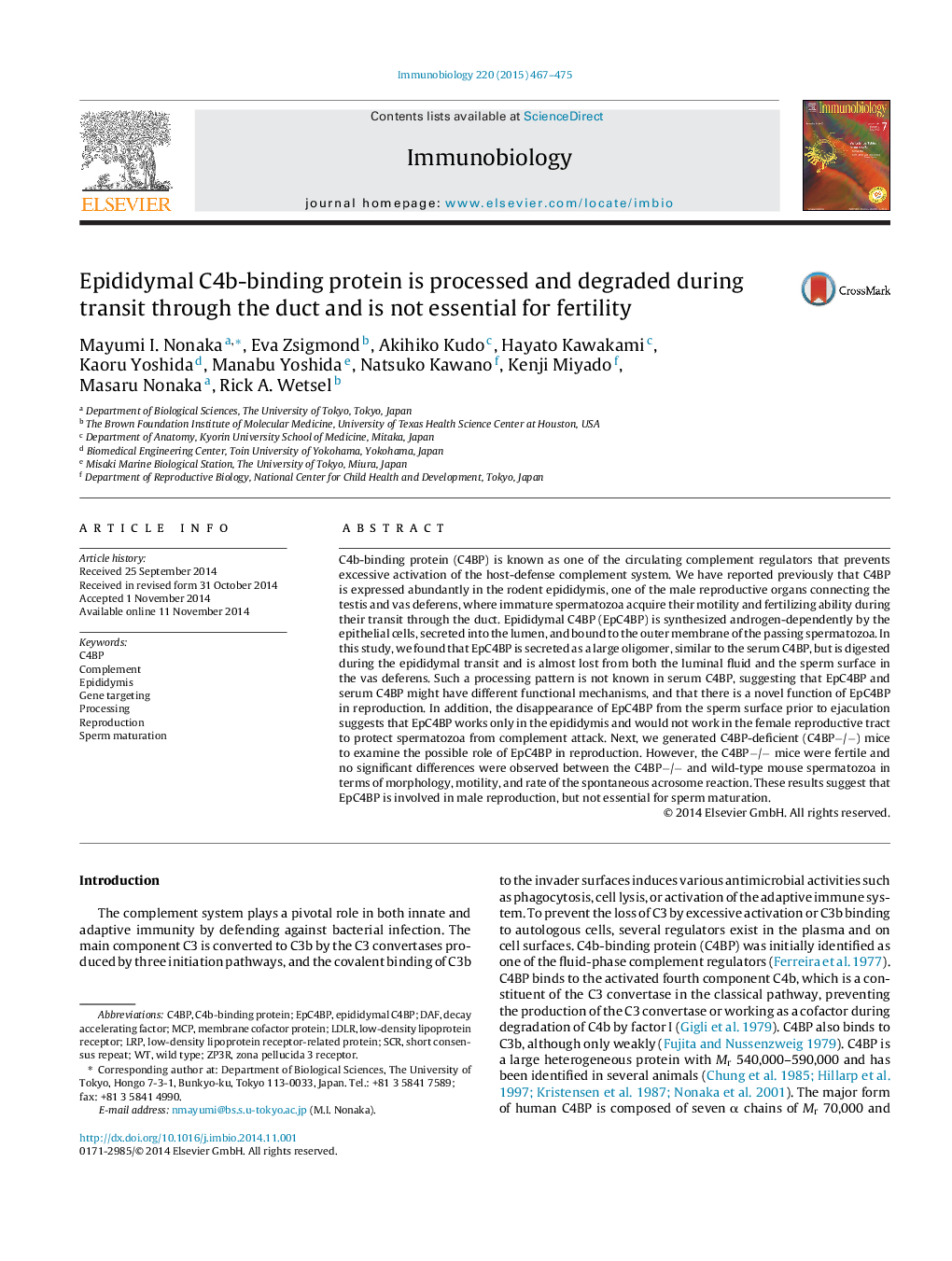| کد مقاله | کد نشریه | سال انتشار | مقاله انگلیسی | نسخه تمام متن |
|---|---|---|---|---|
| 10940858 | 1095526 | 2015 | 9 صفحه PDF | دانلود رایگان |
عنوان انگلیسی مقاله ISI
Epididymal C4b-binding protein is processed and degraded during transit through the duct and is not essential for fertility
دانلود مقاله + سفارش ترجمه
دانلود مقاله ISI انگلیسی
رایگان برای ایرانیان
کلمات کلیدی
MCPC4bpLDLRLRPDAFEpididymis - اپیدیدیم، روخاگ، بربخSperm maturation - بلوغ اسپرمReproduction - تولید مثل یا زادآوریshort consensus repeat - تکرار اجماع کوتاهProcessing - در حال پردازشComplement - متممwild type - نوع وحشیGene targeting - هدف ژنC4b-binding protein - پروتئین C4b اتصالLow-density lipoprotein receptor-related protein - پروتئین مرتبط با گیرنده های لیپوپروتئین کم چگالیmembrane cofactor protein - پروتئین کوفتور غشاءDecay accelerating factor - کاهش فاکتور شتاب دهندهLow-density lipoprotein receptor - گیرنده لیپوپروتئین با چگالی کمSCR - یکسوساز کنترلشده با سیلیکون
موضوعات مرتبط
علوم زیستی و بیوفناوری
بیوشیمی، ژنتیک و زیست شناسی مولکولی
بیولوژی سلول
پیش نمایش صفحه اول مقاله

چکیده انگلیسی
C4b-binding protein (C4BP) is known as one of the circulating complement regulators that prevents excessive activation of the host-defense complement system. We have reported previously that C4BP is expressed abundantly in the rodent epididymis, one of the male reproductive organs connecting the testis and vas deferens, where immature spermatozoa acquire their motility and fertilizing ability during their transit through the duct. Epididymal C4BP (EpC4BP) is synthesized androgen-dependently by the epithelial cells, secreted into the lumen, and bound to the outer membrane of the passing spermatozoa. In this study, we found that EpC4BP is secreted as a large oligomer, similar to the serum C4BP, but is digested during the epididymal transit and is almost lost from both the luminal fluid and the sperm surface in the vas deferens. Such a processing pattern is not known in serum C4BP, suggesting that EpC4BP and serum C4BP might have different functional mechanisms, and that there is a novel function of EpC4BP in reproduction. In addition, the disappearance of EpC4BP from the sperm surface prior to ejaculation suggests that EpC4BP works only in the epididymis and would not work in the female reproductive tract to protect spermatozoa from complement attack. Next, we generated C4BP-deficient (C4BPâ/â) mice to examine the possible role of EpC4BP in reproduction. However, the C4BPâ/â mice were fertile and no significant differences were observed between the C4BPâ/â and wild-type mouse spermatozoa in terms of morphology, motility, and rate of the spontaneous acrosome reaction. These results suggest that EpC4BP is involved in male reproduction, but not essential for sperm maturation.
ناشر
Database: Elsevier - ScienceDirect (ساینس دایرکت)
Journal: Immunobiology - Volume 220, Issue 4, April 2015, Pages 467-475
Journal: Immunobiology - Volume 220, Issue 4, April 2015, Pages 467-475
نویسندگان
Mayumi I. Nonaka, Eva Zsigmond, Akihiko Kudo, Hayato Kawakami, Kaoru Yoshida, Manabu Yoshida, Natsuko Kawano, Kenji Miyado, Masaru Nonaka, Rick A. Wetsel,